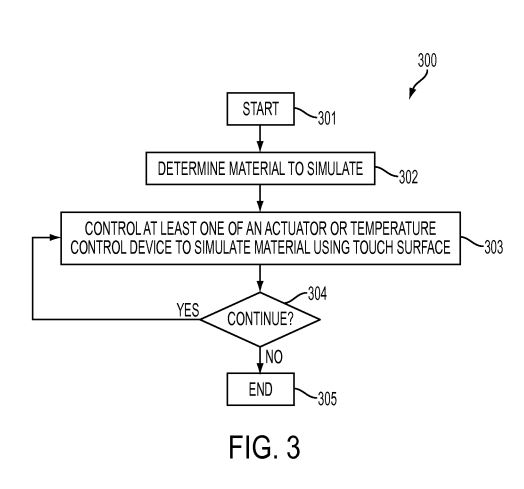Future MacBooks could change the way you feel. Literally.
According to a patent filed yesterday, April 23rd, future Apple devices will enable customers to customize the tactile feel of the exterior materials, as well as interactive touch screens, to induce the illusion of touching leather, wood, plastic, rubber, and other types of texture.

The working principle at the base of the patent, titled “
Touch Surface for Simulating Materials”, utilizes sensors connected to the Force Touch trackpad, which will be coated with a thin layer of diamond. The diamond layer will be subject to vibrations regulated by a temperature control device, to simulate warm or cold sensations.
The invention relies, at least in part, on technology already present in the Taptic engine that powers the Force Touch trackpad on the new 2015 MacBook Retina, which simulates pressure clicks through the use of vibrations. The Taptic engine was introduced also as one major feature in the Apple Watch and in the iPhone 6.
Apple has filed an earlier patent in which it planned to integrate the Touch-ID within touchscreens. With this latest patent, it’s hard not to see a pattern that could tell us something about where Apple devices are headed in terms of user experience.
The ability to mimic the texture of different materials has been researched by several companies in the past, including Disney, with disappointing results. Apple may have found, at last, a way to bring the technology out of the drawing board and into reality, by adding one more dimension to user experience.
Aside from customizing the exterior look of a device, users of touchscreens, as well as MacBooks, could experience a full array of textures, bringing them closer to what they see on a display.
For instance, art enthusiasts could experience the texture of an oil painting, or a sculpture, by simply touching the trackpad on their MacBooks, or the touchscreen on their iPad and iPhone devices.
By the same token, marine biology students could experience and understand the nuances and texture of a shark’s skin, or what different types of algae feel like, at the bottom of different oceans and seas around the world, by simply using the trackpad on their MacBooks or their iPad touch screens.
At present, there is no telling on the way Apple plans to implement the technology described in this patent, but the possibilities seem endless.